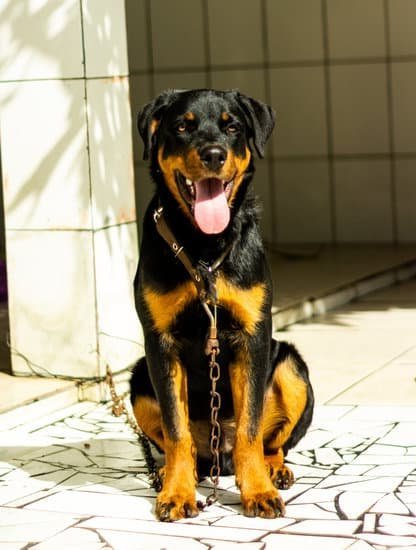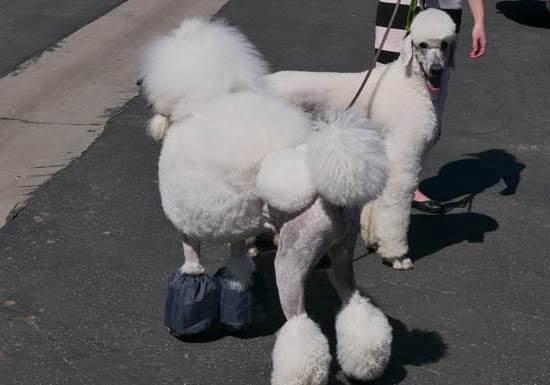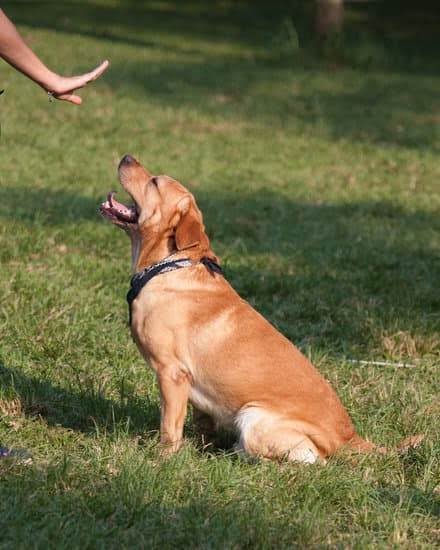Military working dogs play a crucial role in various tasks and missions, from detecting explosives to apprehending suspects. But who trains military working dogs? The answer to this question is essential in understanding the intense training required for these highly skilled canines. In this article, we will delve into the world of military working dog training, exploring the history, characteristics, specialized training, handlers, and the organizations responsible for shaping these exceptional animals.
The history of military working dogs dates back to ancient times, with records of their use in warfare by civilizations such as the Greeks and Romans. Over the centuries, dogs have been trained for a wide range of tasks, evolving into indispensable assets in modern military operations. Understanding their development and training techniques provides insight into their current roles and capabilities.
In exploring the characteristics and breeds of dogs used for military work, it becomes apparent that not all canines are suited for these demanding roles. Certain traits such as intelligence, agility, strength, and adaptability are sought after when selecting candidates for military working dog training. Through specialized training programs tailored to their specific roles, these dogs develop skills that enable them to effectively support their human counterparts in volatile environments”.
The History of Military Working Dogs and Their Training
Military working dogs have been an integral part of military operations for centuries, with their training evolving alongside the changing nature of warfare. The history of military working dogs and their training can be traced back to ancient civilizations, where they were used for tasks such as guarding settlements and accompanying soldiers into battle.
In more recent times, the use of military working dogs became widespread during World War I, where they were primarily utilized for sentry duty and messenger services.
Evolution of Training
The training methods for military working dogs have evolved significantly over the years. In the early days, training focused mainly on obedience and basic tasks such as carrying messages and providing security.
However, with advancements in warfare and technology, the role of military working dogs expanded to include specialized tasks such as explosive detection, search and rescue, and patrol work. As a result, the training programs for these dogs have become more specialized and intensive to equip them with the necessary skills for modern combat scenarios.
Role in Modern Warfare
In today’s military landscape, the role of military working dogs has become even more diverse and essential. They are deployed in various operations around the world, including counterterrorism efforts, peacekeeping missions, and disaster response activities.
Their training has adapted to meet these new challenges, encompassing a wide range of skills such as agility training, scent detection work, apprehension techniques, and even medical treatment assistance in some cases. As a result, the history of military working dog training continues to be shaped by the ever-changing demands of modern warfare.
As we look to the future of military working dog training, it is evident that continued advancements in technology and tactics will drive further developments in their training programs. This will require ongoing collaboration between military agencies, law enforcement organizations, and animal behavior experts to ensure that these valuable assets are equipped with the skills needed to support military operations effectively.
The Characteristics and Breeds of Dogs Used for Military Work
Military working dogs come in various breeds, each with their own unique characteristics that make them well-suited for the demanding tasks they are required to perform. These breeds are carefully selected based on their physical abilities, temperament, and trainability. German Shepherds, Belgian Malinois, Dutch Shepherds, Labrador Retrievers, and Doberman Pinschers are among the most commonly used breeds for military work.
Characteristics of Military Working Dogs
Military working dogs must possess certain traits in order to be successful in their roles. They need to be intelligent, alert, obedient, agile, and have a strong work ethic. These dogs also need to have a calm and confident demeanor as they will often find themselves in high-stress situations.
Breeds Used for Specific Tasks
Different breeds are often chosen for specific tasks based on their natural abilities. For example, German Shepherds and Belgian Malinois are commonly used for patrol and detection work due to their high energy levels and strong drive. On the other hand, Labrador Retrievers are often chosen for their excellent sense of smell and ability to work well with people, making them ideal for tasks such as explosive detection.
The selection of the right breed is crucial in ensuring the effectiveness of military working dogs in carrying out their duties. Their specific characteristics play a critical role in determining how successful they will be in various missions and tasks assigned to them.
The Specialized Training Required for Military Working Dogs
One important aspect of the specialized training required for military working dogs is their ability to remain focused and obedient in high-stress situations. These canines must be able to follow commands from their handlers even in chaotic or dangerous environments. Additionally, they must be trained to detect and alert their handlers to the presence of explosives or other threats with accuracy and efficiency.
Military working dogs also receive training in tracking and apprehension techniques, essential skills for tasks such as patrols or search and rescue missions. This specialized training equips them with the ability to locate individuals or objects over varied terrain and under different environmental conditions.
Another critical aspect of their specialized training is bite work, where they are taught the appropriate use of force when apprehending suspects. This requires precise control from both the dog and its handler. All these skills are honed through consistent practice sessions that simulate real-world scenarios.
| Aspect of Training | Description |
|---|---|
| Stress Management | Military working dogs are trained to remain focused and obedient in high-stress situations. |
| Tracking | Canines undergo specialized training in tracking techniques to locate individuals or objects across various terrains. |
| Bite Work | Dogs are taught appropriate use of force when apprehending suspects. |
The Handlers
Military working dogs are an essential part of the armed forces, and their training is crucial to ensure they can fulfill their roles effectively. The handlers of these canine soldiers play a vital role in this process, forming a strong bond with the dogs and providing them with the necessary guidance and support. These handlers are often enlisted military personnel who undergo specialized training to work with these highly skilled animals.
Handlers are responsible for the day-to-day care and training of military working dogs. This includes grooming, feeding, and ensuring the overall well-being of the dogs. Additionally, they are tasked with teaching obedience, agility, and specialized skills such as explosive detection or search and rescue. They work closely with the dogs to develop a deep understanding of their behavior and capabilities, allowing them to tailor training programs according to each dog’s strengths and weaknesses.
The bond between handlers and military working dogs is based on trust, respect, and mutual dependence. Handlers rely on their dogs to perform critical tasks in challenging environments, while the dogs look up to their handlers for guidance and protection. This relationship is crucial in the success of military operations involving these highly trained canines.
The Importance of Training Military Working Dogs for Specific Tasks and Missions
Military working dogs play a crucial role in various tasks and missions within the military. These highly trained animals can perform a wide range of duties, including explosives detection, patrol work, search and rescue operations, and even apprehension of suspects. As a result, it is essential to understand the significance of training military working dogs for specific tasks and missions.
One of the primary reasons why the training of military working dogs for specific tasks and missions is so important is the critical nature of their duties. For example, explosive detection dogs are responsible for locating improvised explosive devices (IEDs) before they can cause harm to military personnel or civilians. Therefore, these dogs must undergo extensive training to ensure that they can effectively detect explosive materials in various environments and conditions.
Additionally, training military working dogs for specific tasks and missions also helps to ensure the safety and well-being of both the dogs themselves and their handlers. Proper training allows these animals to carry out their duties with precision and confidence, reducing the risk of injury or error during operations. Moreover, well-trained military working dogs are better equipped to handle high-stress situations and make quick decisions when necessary.
Finally, specialized training for military working dogs also contributes to the overall effectiveness and efficiency of military operations. Whether they are conducting search and rescue missions or providing support during combat scenarios, these highly skilled animals can significantly enhance the capabilities of military units. By tailoring their training to specific tasks and missions, military working dogs become valuable assets that contribute to mission success.
| Reasons | Importance |
|---|---|
| Duties Are Critical | Ensures safety by preventing harm from explosives |
| Safety Benefits | Reduces risk of injury or error during operations |
| Enhanced Operations | Contributes to mission success by enhancing capabilities |
The Training Process for Military Working Dogs
Military working dogs undergo rigorous training to prepare them for the specific tasks and missions they will be involved in. The training process for these dogs is a comprehensive program that helps them develop the skills necessary to assist military personnel in various operations. Here are some key aspects of the training process for military working dogs:
- Basic obedience training: Military working dogs start with basic obedience training, which includes commands such as sit, stay, come, and heel. This foundational training helps the dogs understand and respond to their handlers’ instructions effectively.
- Specialized skills training: In addition to basic obedience, military working dogs receive specialized skills training based on the specific tasks they will be performing. This can include tracking, scent detection, apprehension, and bomb detection, among others. Each dog is trained to excel in its designated area of expertise.
- Scenario-based training: To ensure that military working dogs are prepared for real-world situations, they undergo scenario-based training exercises. These exercises simulate different environments and conditions that the dogs may encounter during their missions, allowing them to practice and refine their skills in a controlled setting.
Overall, the training process for military working dogs is designed to equip them with the necessary skills to support and protect military personnel during various operations. It is a critical aspect of ensuring the effectiveness and success of these highly skilled canine companions in their roles within the military.
The Organizations and Institutions Responsible for Training Military Working Dogs
The training of military working dogs is a crucial aspect of their success in the field. There are several organizations and institutions responsible for this specialized training. One of the most well-known organizations is the United States Department of Defense Military Working Dog Program.
This program oversees the procurement, training, and deployment of military working dogs across all branches of the armed forces. Additionally, there are private companies and contractors that assist in the training of these valuable K9 units.
The Department of Defense often works with civilian trainers and organizations to ensure that military working dogs receive the best possible training. These organizations have expertise in various aspects of dog training, from obedience to specialized skills such as explosives detection or patrol work. Some facilities also focus on breeding and raising potential military working dogs, ensuring they have the right temperament and genetics for the job.
In addition to these organizations, there are specific institutions dedicated to research and development in the field of military working dog training. These institutions work to advance training methods, improve equipment, and better understand canine behavior to enhance the effectiveness of military working dogs in their roles. As technology advances, these institutions play a vital role in keeping military working dog training up-to-date with the latest advancements.
The Future of Military Working Dog Training and Advancements in the Field
In conclusion, the future of military working dog training holds great promise, with advancements in technology and an increased understanding of canine behavior and capabilities. As the role of military working dogs continues to evolve and expand, so too will the training methods and techniques required to meet the demands of modern warfare.
With a focus on specialized skills and tasks, as well as a deeper understanding of breed characteristics, handlers and trainers are constantly refining their approach to ensure that military working dogs are prepared for any situation they may encounter in the field.
Advancements in medical care for military working dogs are also on the horizon, with research being conducted to improve their overall health and well-being. This includes not only physical fitness, but also mental resilience and stress management for these dedicated canines. Additionally, new equipment and technology are being developed to enhance communication between handlers and their canine counterparts, further improving their effectiveness on the battlefield.
As we look ahead to the future of military working dog training, it is clear that continued collaboration between organizations, institutions, and experts in the field will be crucial. By sharing knowledge and expertise, the training process for military working dogs will undoubtedly continue to advance, ensuring that these loyal and courageous animals remain an indispensable asset to our armed forces for years to come.
The dedication and commitment of those involved in the training of military working dogs is unmatched, and it is through their tireless efforts that we can look forward to a bright future for this essential aspect of military operations.
Frequently Asked Questions
What Branch Trains Military Dogs?
The branch responsible for training military dogs is the United States Military. The dogs that are trained by the U.S Military come from various breeds and are carefully selected to undergo rigorous training to become valuable assets in military operations.
How Are Military Working Dogs Trained?
Military working dogs undergo intense training regimens that include obedience, agility, endurance, and specialized tasks like bomb detection or apprehension of suspects. They are trained to be highly disciplined and responsive to their handlers’ commands in a variety of scenarios.
What Are Military Dog Trainers Called?
Those who train military working dogs are typically referred to as dog handlers or K9 trainers. These individuals have extensive experience and expertise in canine behavior, training techniques, and specialized skills required for handling and working with military dogs. Their work is crucial in ensuring that the dogs perform their duties effectively and safely in a military setting.

Welcome to the blog! I am a professional dog trainer and have been working with dogs for many years. In this blog, I will be discussing various topics related to dog training, including tips, tricks, and advice. I hope you find this information helpful and informative. Thanks for reading!





